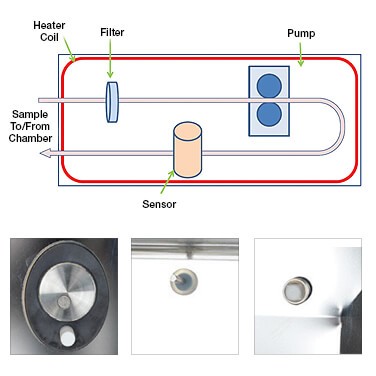What to Consider When Selecting a CO2 Incubator
When culturing primary and stem cells, incubation times with optimal conditions are critical to cell growth. Choose a CO2 incubator with the right features for your application, including high-quality in-chamber sensors that accurately measure the true conditions your cells experience.
Frequently Asked Questions
Q: Does the location of the sensors in a CO2 incubator affect my cultured cells?
A: Yes. Sensors should be exposed to the same conditions as your sensitive cells. Some CO2 incubators place the sensors outside the chamber, which creates a delay in response and may not reflect current conditions. However, external sensors are not exposed to the hot, humid, and slightly acidic conditions in the chamber and are not required to withstand high-temperature sterilization or chemical disinfectants.
Thermo Scientific CO2 incubators feature temperature, CO2, O2, and humidity sensors inside the cell incubation chamber. The sensors can then react to the same conditions as the cells, provide accurate and quick responses, minimize delays, and eliminate the need for tubing and other supplies.
Q: What is a bypass loop?
A: A bypass loop is used to measure conditions inside an incubator using external rather than internal sensors. With this method, air from the chamber is pumped through a filter and tubing to the sensors, then returned to the chamber.
Because the air must be heated to maintain temperature and limit condensation, the conditions measured may differ from conditions in the chamber. Additionally, by-pass loops may introduce the risk of microbial contamination to the chamber — and to your cells.
This also eliminates the need for the tubing, filters, pump, and heater. Examples include (A) a thermal conductivity CO2 sensor with relative humidity compensation, (B) dual-temperature probes, and (C) a zirconium oxide O2 sensor.
Q: What other features are important when selecting a CO2 incubator?
A: Choose a CO2 incubator that can provide an optimal growth environment, contamination control, and enhanced simplicity.
Consider:
- Chamber capacity
- Heating method (direct or water jacketed)
- Sensors, filters, and other condition-monitoring options and alarms
- Dimensions and space limitations (door swing direction, stackability)
- Internal configuration (glass viewing door, adjustable shelves)
- Construction materials (stainless-steel or copper interiors)
- Ease of operation, cleaning, and maintenance

